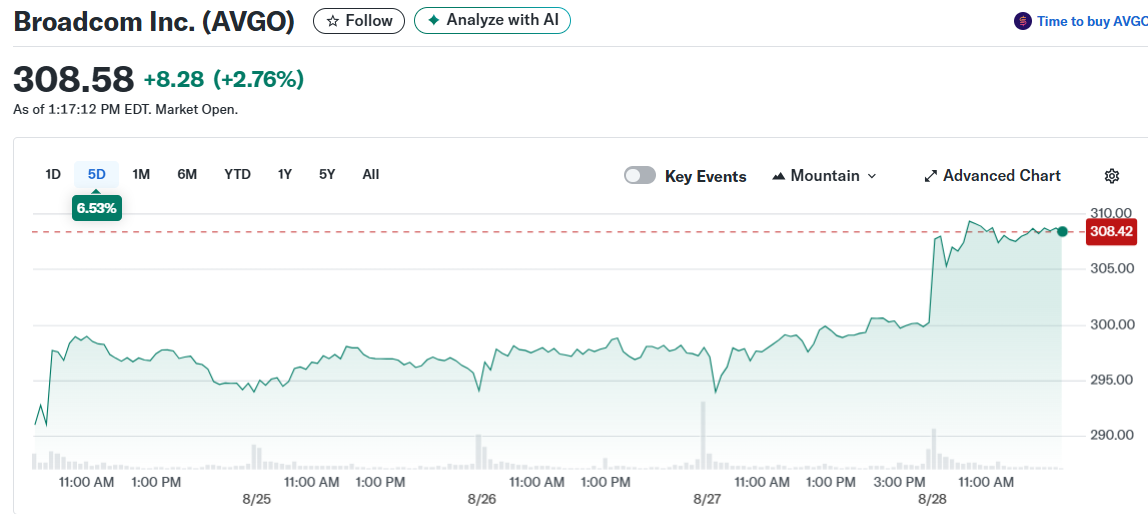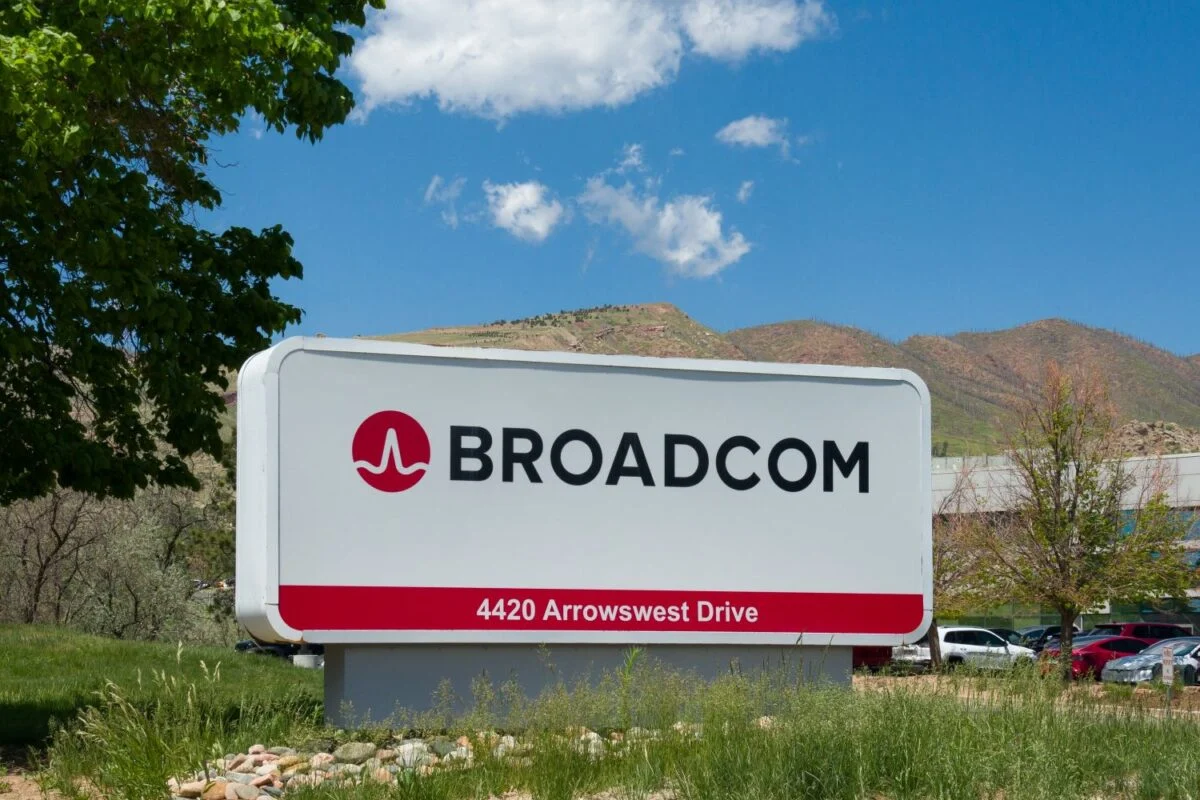TLDR
- Broadcom stock rose 2.4% to $307.50 following Nvidia’s earnings results
- Top analysts raised price targets ahead of Broadcom’s September 4 Q3 earnings report
- Wall Street expects Broadcom Q3 revenue to grow 21% year-over-year to $15.82 billion
- AI-related revenue projected to surge 60% in FY25 to $19.5 billion
- Strong demand from hyperscalers like Google and Meta driving optimism
Broadcom shares climbed 2.4% to $307.50 Thursday morning as investors parsed through Nvidia’s latest earnings results. The chip sector showed mixed reactions to Nvidia’s performance, but Broadcom emerged as one of the clear winners.

The semiconductor company benefits from the broader AI spending boom that Nvidia’s CEO Jensen Huang outlined. Huang projected that major AI companies will spend $3 trillion to $4 trillion over the next five years on data center infrastructure.
For every $50 billion to $60 billion companies spend on AI data centers, Nvidia expects to capture around $35 billion. This spending spree creates ripple effects throughout the chip ecosystem, including companies like Broadcom that supply custom AI chips and networking solutions.
Analyst Optimism Builds Ahead of Earnings
Wall Street analysts have been raising their expectations for Broadcom ahead of its September 4 earnings report. The company is expected to post earnings of $1.66 per share for Q3, up from $1.24 in the same quarter last year.
Revenue projections show even stronger growth. Analysts expect Broadcom’s Q3 revenue to jump 21% year-over-year to $15.82 billion.
Citi analyst Christopher Danely maintained his Buy rating and $315 price target. He expects the company to beat consensus estimates when it reports next week.
Danely sees AI-related revenue growing 60% year-over-year in fiscal 2025 to reach $19.5 billion. This growth comes from continued demand from major cloud providers who are expanding their AI infrastructure.
The analyst believes Broadcom will guide fourth-quarter revenue above expectations. Stronger orders from Google and Meta are expected to drive this upbeat outlook.
Hyperscaler Demand Fuels Growth
Susquehanna analyst Christopher Rolland took an even more optimistic stance. He raised his price target from $300 to $350 while maintaining a Buy rating.
Rolland expects solid demand across Broadcom’s AI chips and networking products. He also sees signs of recovery in the company’s core semiconductor business.
The analyst pointed to spending plans from cloud giants as a key growth driver. Google and Meta continue to invest heavily in AI infrastructure, creating steady demand for Broadcom’s products.
Broadcom’s customer pipeline includes major hyperscalers like Google, Meta, and ByteDance. The company also has prospects with OpenAI and Apple for future AI chip orders.
While both analysts acknowledge some margin pressure from the growing AI business mix, they remain confident in long-term growth prospects. The shift toward AI chips typically carries lower margins than traditional semiconductors.
Rolland expects massive deployments of AI processing units by fiscal 2027. Google, Meta, and ByteDance are all planning significant expansions of their AI capabilities during this timeframe.
Market Positioning
Broadcom currently trades with a Strong Buy consensus rating on TipRanks. The rating comes from 28 Buy recommendations and two Hold ratings issued over the past three months.

The average price target of $310.75 suggests 4.28% upside potential from current levels. Shares have gained 28.86% year-to-date, outperforming many tech stocks.
The company’s custom AI chip business has become a major growth engine. Unlike general-purpose processors, these chips are designed specifically for individual customers’ AI workloads.
This customization creates sticky customer relationships and higher switching costs. Once hyperscalers integrate custom chips into their systems, they’re less likely to change suppliers.
Broadcom reports Q3 earnings after market close on September 4. The results will provide insight into AI demand trends and the company’s progress capturing market share from this spending wave.


